Abstract
Utilization of iron (Fe3+) by Escherichia coli depends upon a system which is determined by at least two genetic loci. Mutants which carry a deletion of the tonB-trp region of the chromosome grow only when very high concentrations of iron are present in the medium. These strains are sensitive to chromic ion (Cr3+) and, unlike the parent strain, fail to grow on MnSO4 when FeSO4 is not added to the medium. A second type of mutant, Chr2, which was isolated on the basis of its sensitivity to chromic ion, also requires a high concentration of iron for growth. This mutant can be distinguished phenotypically from the deletion mutants since it grows normally on low concentrations of iron, provided citrate is added to the medium. The chromium sensitivity of both types of mutants can be reversed by high concentrations of exogenous iron. The data are interpreted to indicate that the E. coli mutants studied are defective in iron transport and that residual iron transport is in some way inhibited by chromic ion.
Full text
PDF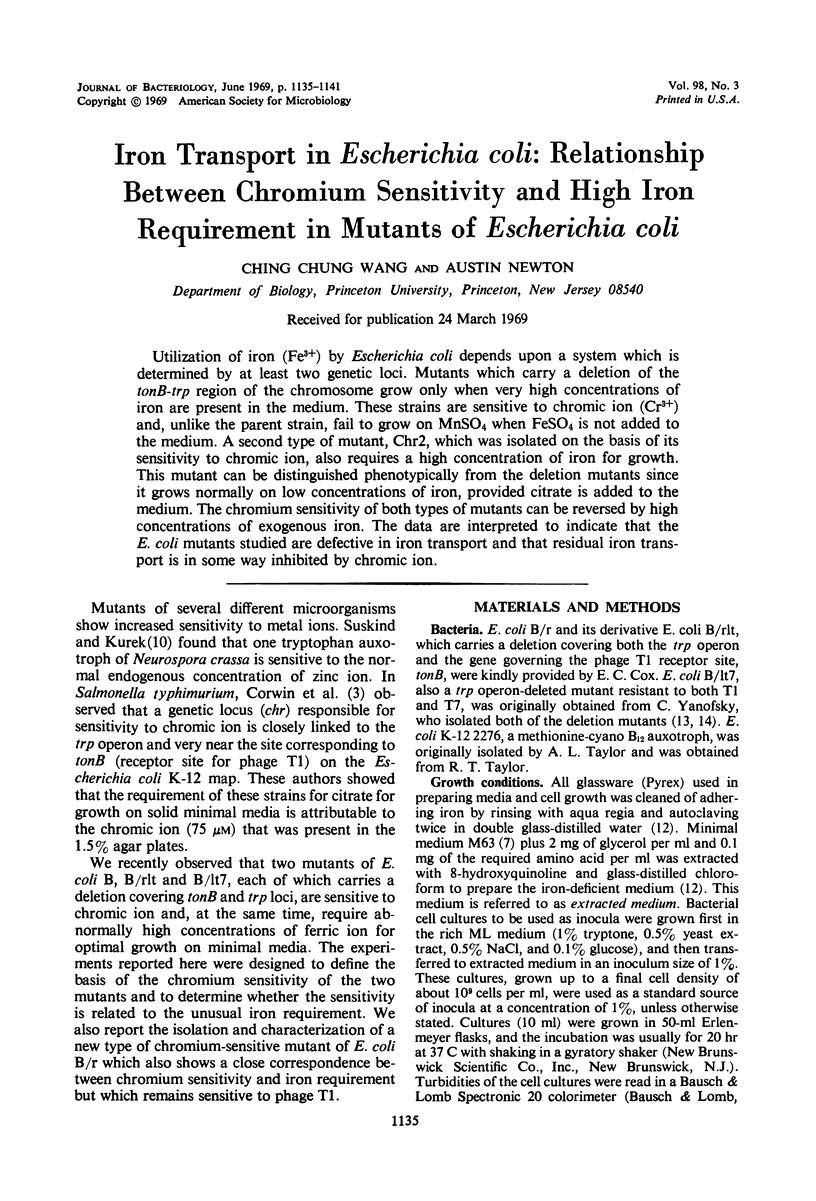
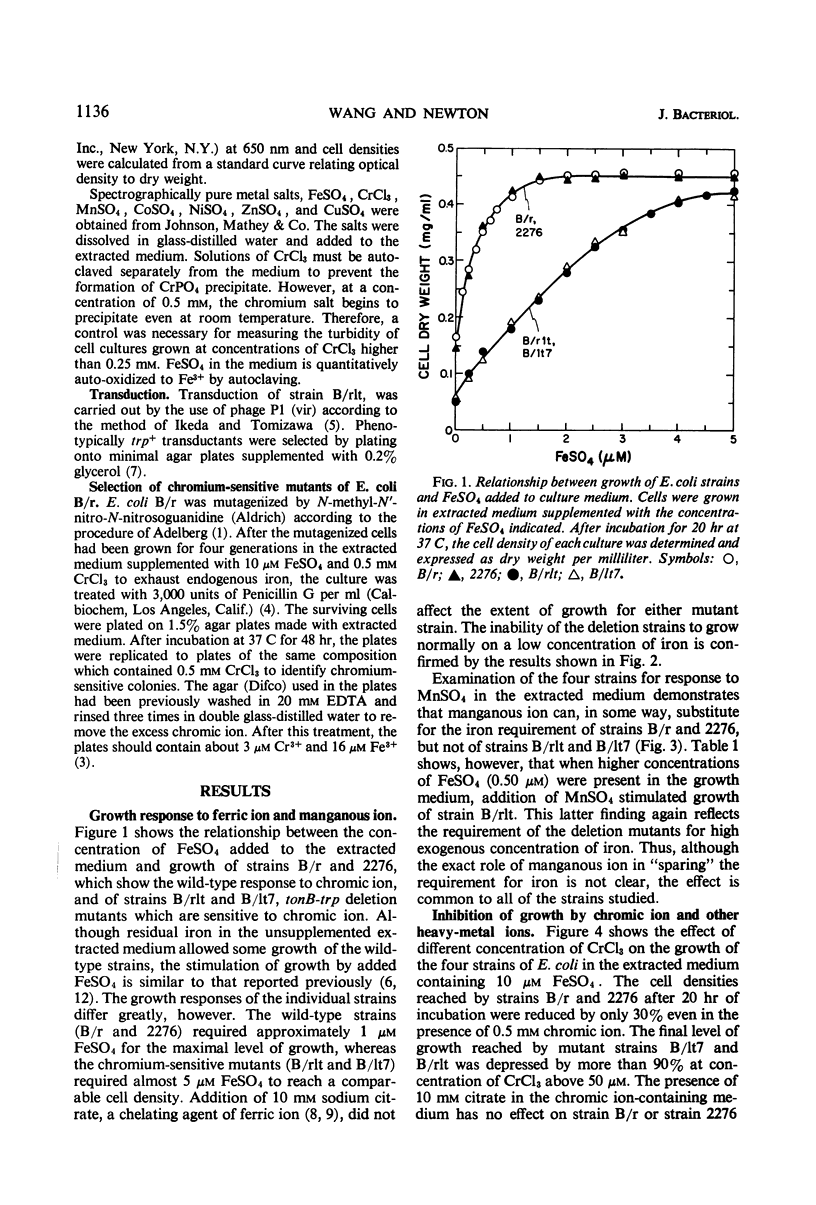
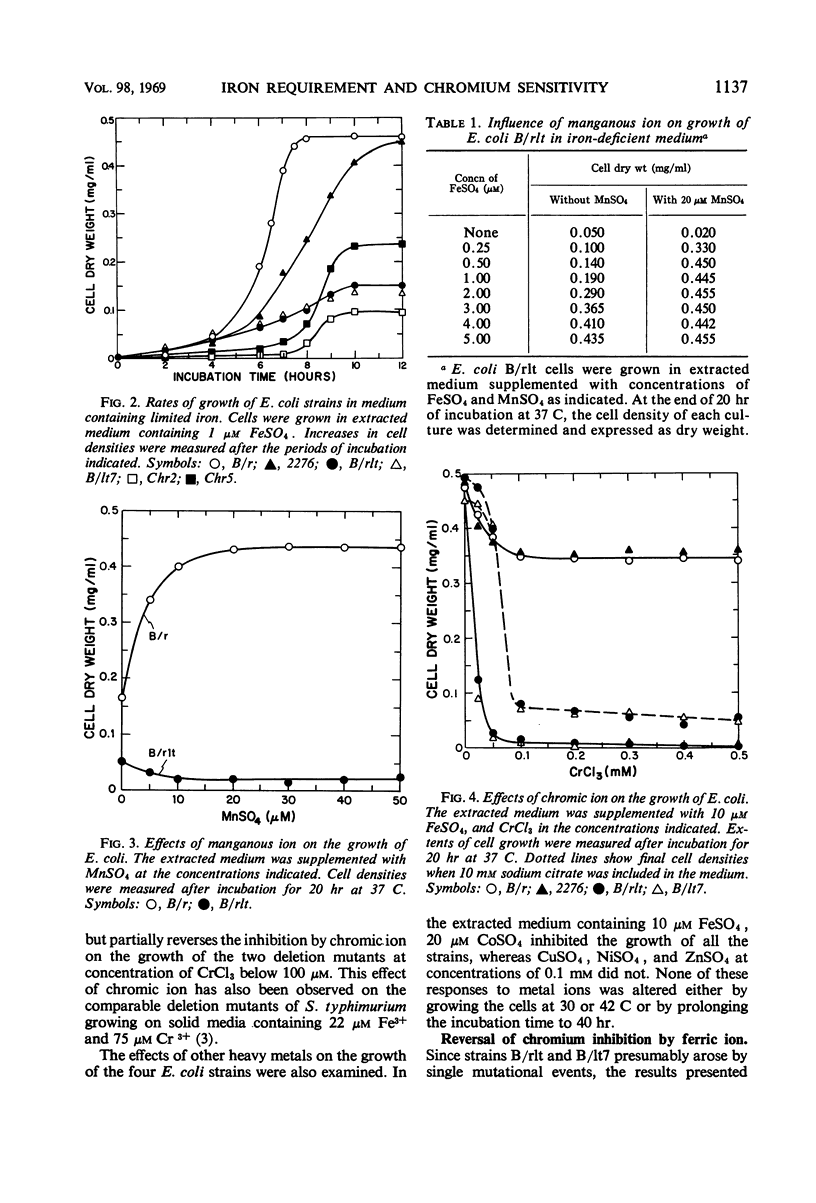
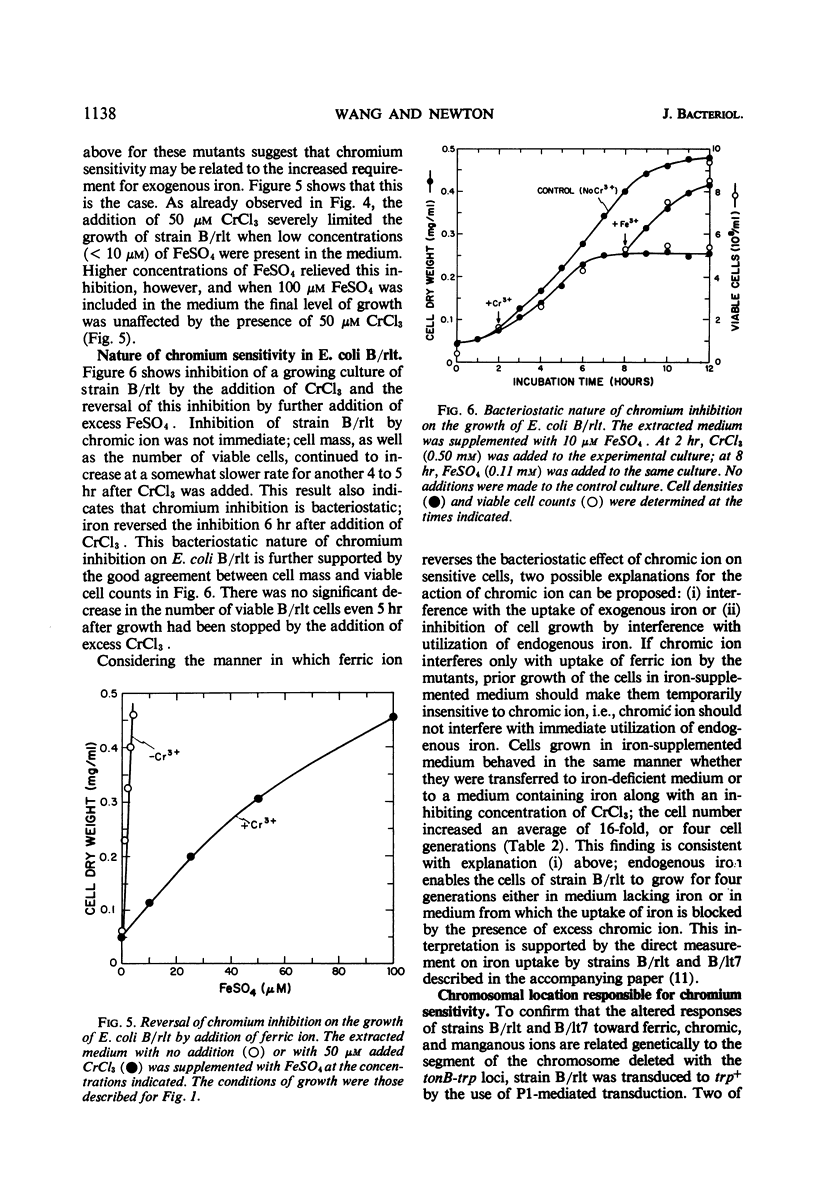
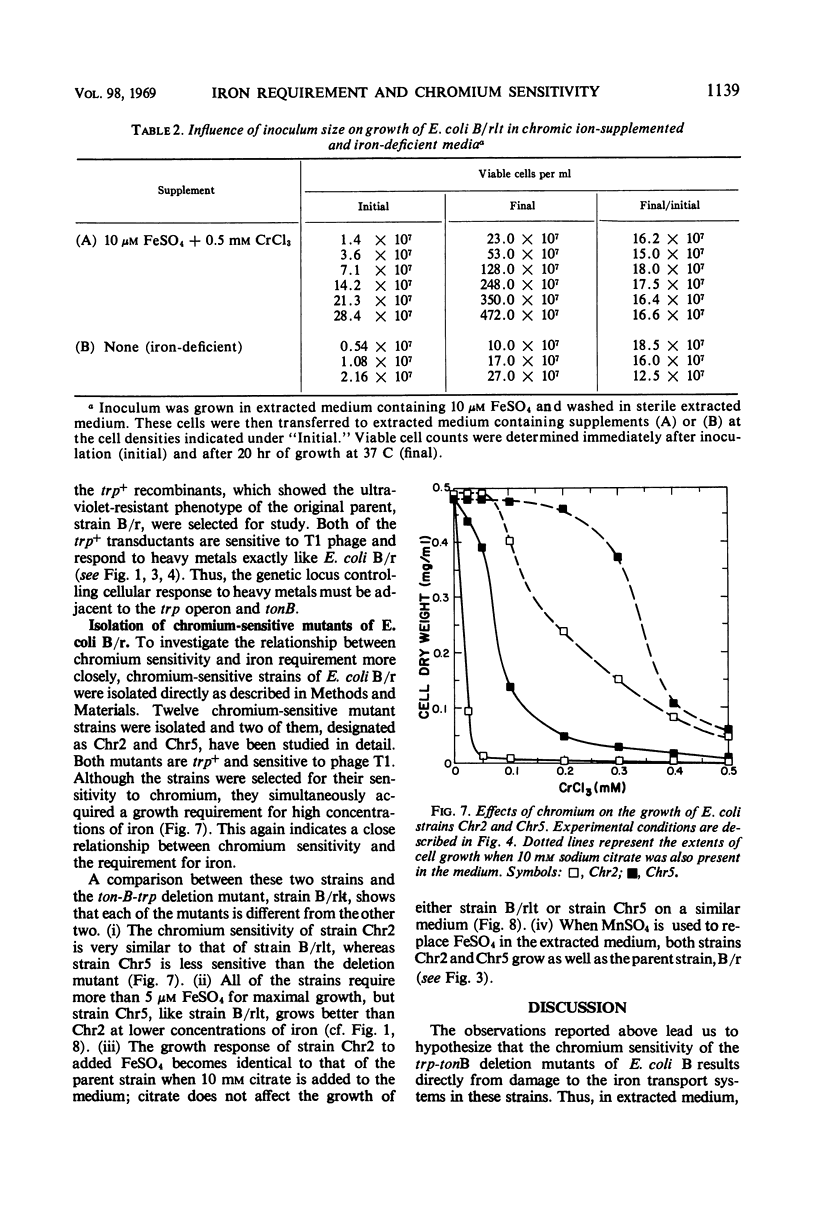
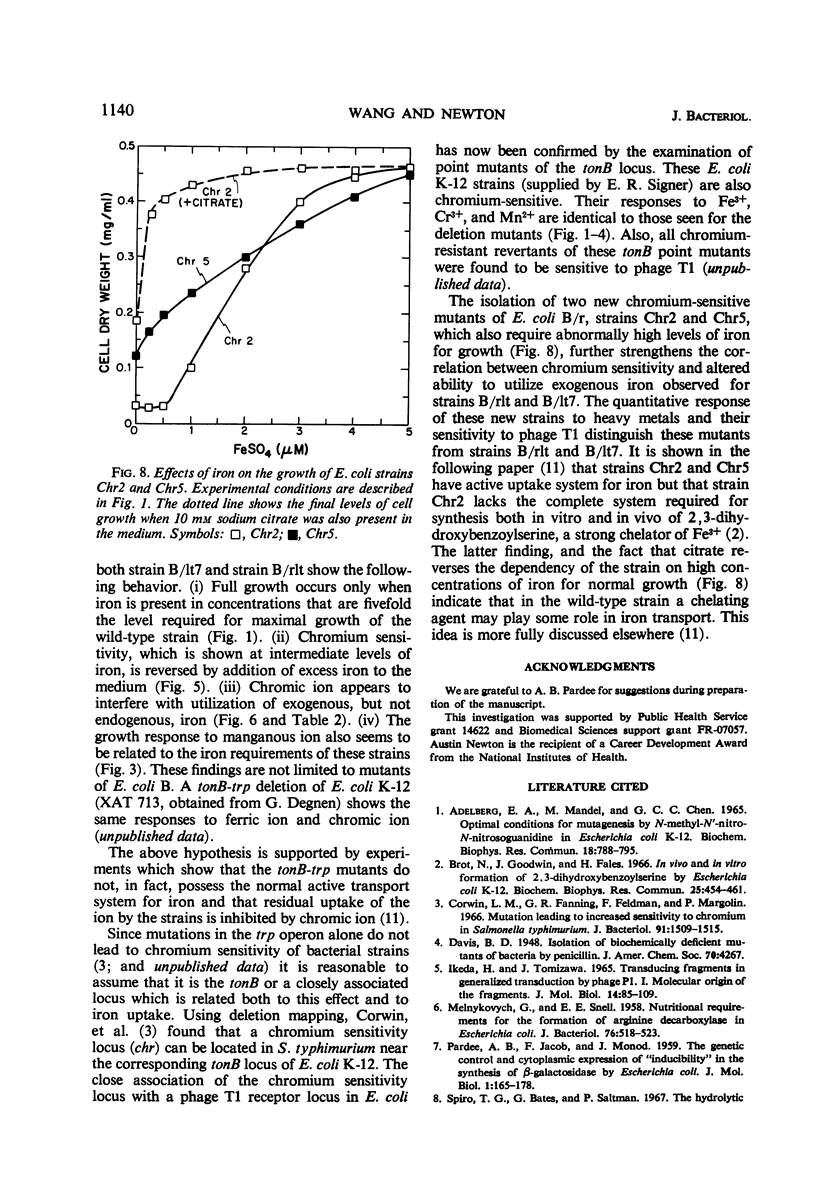
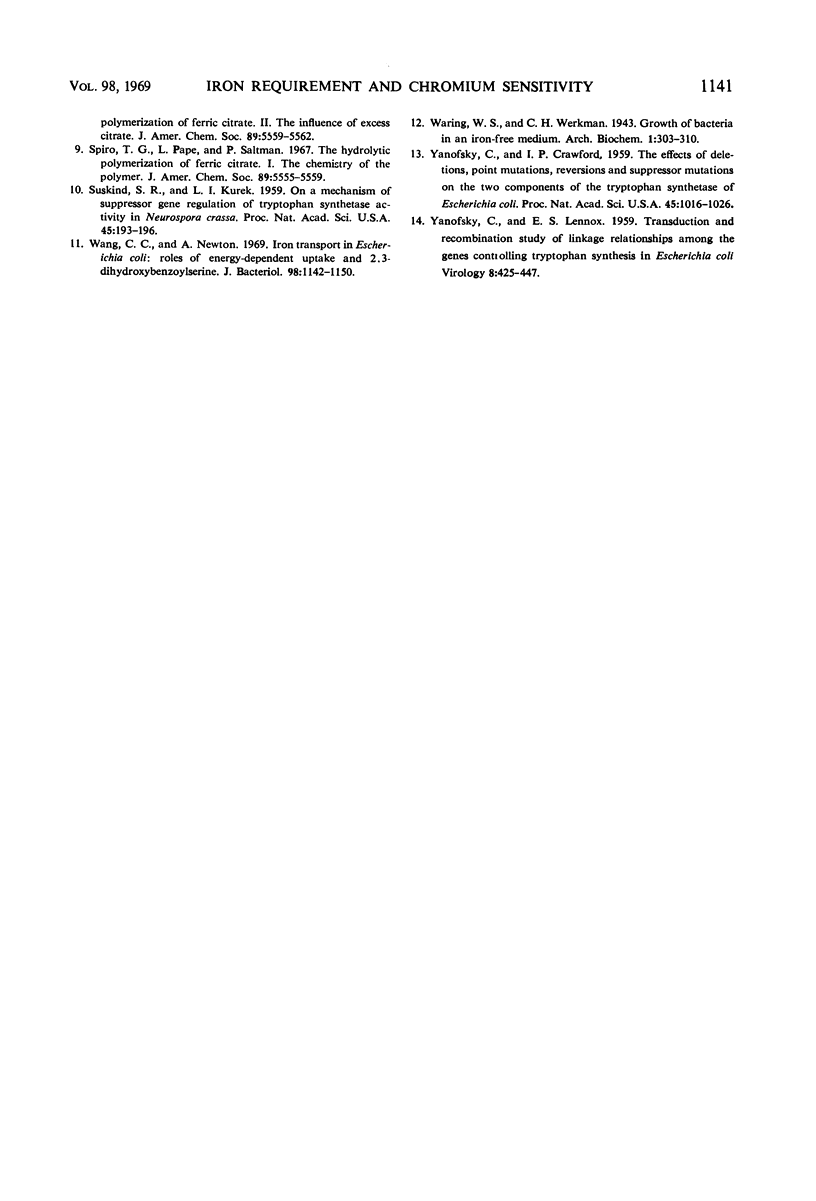
Selected References
These references are in PubMed. This may not be the complete list of references from this article.
- Brot N., Goodwin J., Fales H. In vivo and in vitro formation of 2,3-dihydroxybenzoylserine by Escherichia coli K12. Biochem Biophys Res Commun. 1966 Nov 22;25(4):454–461. doi: 10.1016/0006-291x(66)90227-0. [DOI] [PubMed] [Google Scholar]
- Corwin L. M., Fanning G. R., Feldman F., Margolin P. Mutation leading to increased sensitivity to chromium in Salmonella typhimurium. J Bacteriol. 1966 Apr;91(4):1509–1515. doi: 10.1128/jb.91.4.1509-1515.1966. [DOI] [PMC free article] [PubMed] [Google Scholar]
- Dunn J. T., Spiro R. G. The alpha 2-macroglobulin of human plasma. I. Isolation and composition. J Biol Chem. 1967 Dec 10;242(23):5549–5555. [PubMed] [Google Scholar]
- Ikeda H., Tomizawa J. I. Transducing fragments in generalized transduction by phage P1. I. Molecular origin of the fragments. J Mol Biol. 1965 Nov;14(1):85–109. doi: 10.1016/s0022-2836(65)80232-7. [DOI] [PubMed] [Google Scholar]
- MELNYKOVYCH G., SNELL E. E. Nutritional requirements for the formation of arginine decarboxylase in Escherichia coli. J Bacteriol. 1958 Nov;76(5):518–523. doi: 10.1128/jb.76.5.518-523.1958. [DOI] [PMC free article] [PubMed] [Google Scholar]
- Suskind S. R., Kurek L. I. ON A MECHANISM OF SUPPRESSOR GENE REGULATION OF TRYPTOPHAN SYNTHETASE ACTIVITY IN NEUROSPORA CRASSA. Proc Natl Acad Sci U S A. 1959 Feb;45(2):193–196. doi: 10.1073/pnas.45.2.193. [DOI] [PMC free article] [PubMed] [Google Scholar]
- Wang C. C., Newton A. Iron transport in Escherichia coli: roles of energy-dependent uptake and 2,3-dihydroxybenzoylserine. J Bacteriol. 1969 Jun;98(3):1142–1150. doi: 10.1128/jb.98.3.1142-1150.1969. [DOI] [PMC free article] [PubMed] [Google Scholar]
- YANOFSKY C., LENNOX E. S. Transduction and recombination study of linkage relationships among the genes controlling tryptophan synthesis in Escherichia coli. Virology. 1959 Aug;8:425–447. doi: 10.1016/0042-6822(59)90046-7. [DOI] [PubMed] [Google Scholar]
- Yanofsky C., Crawford I. P. THE EFFECTS OF DELETIONS, POINT MUTATIONS, REVERSIONS AND SUPPRESSOR MUTATIONS ON THE TWO COMPONENTS OF THE TRYPTOPHAN SYNTHETASE OF ESCHERICHIA COLI. Proc Natl Acad Sci U S A. 1959 Jul;45(7):1016–1026. doi: 10.1073/pnas.45.7.1016. [DOI] [PMC free article] [PubMed] [Google Scholar]


